This article was scraped from Rochester Subway. This is a blog about Rochester history and urbanism has not been published since 2017. The current owners are now publishing link spam which made me want to preserve this history.. The original article was published May 14, 2010 and can be found here.
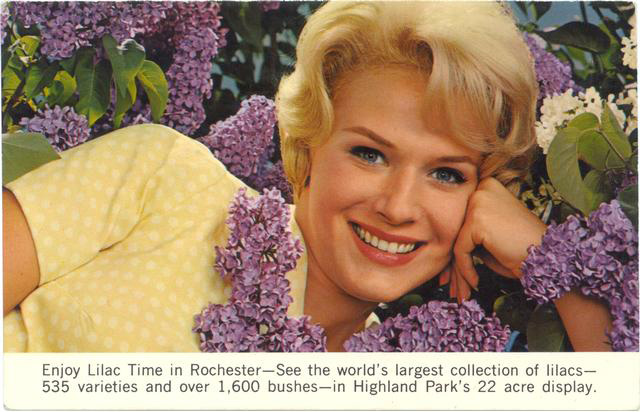
Stop everything... do you smell that? No sir, I showered yesterday so it's not me. That lovely aroma you just caught a whiff of is coming from Highland Park. Oh yeeeyah, since 1898 Springtime in Rochester means more than just flowers. Flowers are for pansy-ass towns. Here in the R-O-C we do LILACS. So grab your old lady and your Kodak--we're taking a trip to the early days of Rochester's Lilac Festival...
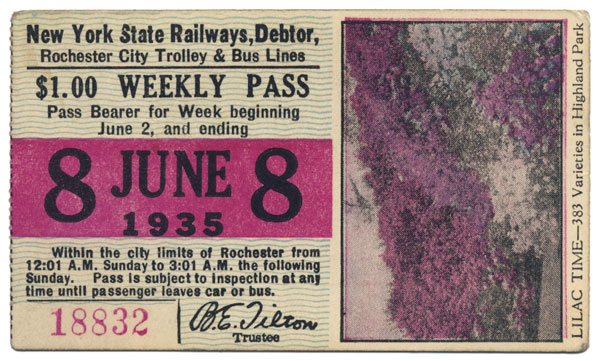
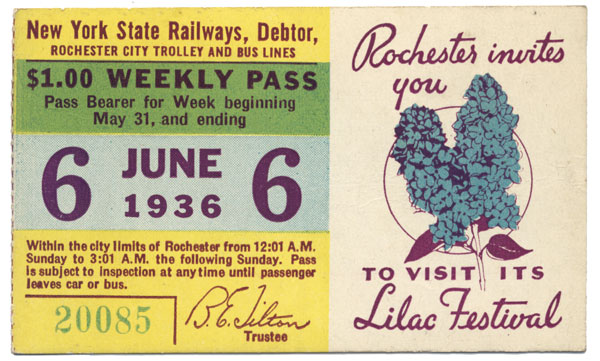
First thing you're going to need if your venturing out to the Lilac Festival at Pinnacle Range is a trolley pass so you can hop on the South Ave trolley line. Fortunately I've got a pair from 1935 and '36--they should still be good. (BTW, RochesterSubway.com has a few more of these trolley passes for sale here if you're interested.)
After stepping off the streetcar you'll probably notice the terrain isn't quite as flat as you're used to. Highland Park came into existence in 1888 when 20 acres of the Ellwanger & Barry Nursery, along with many rare trees and shrubs, were donated to the city for the park. The property was located on the Pinnacle Range, a three mile long string of steep, irregular hills that had been formed 13,000 years ago during the Ice Age by the receding glacier. Fascinating!
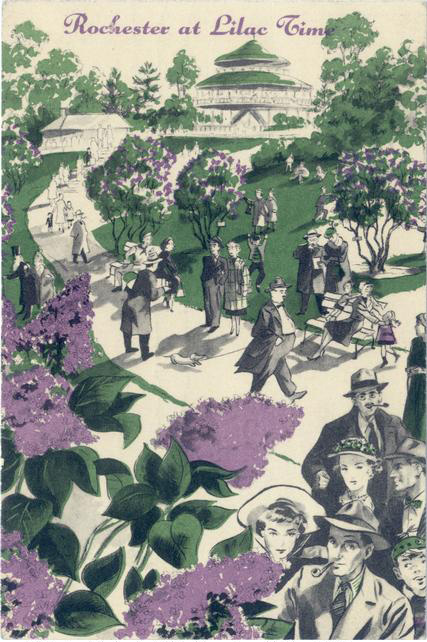
Alrighty then, let's take a stroll down this curvy footpath. My my, how picture-esque these views are. Why it almost seems as though each and every view was carefully planned out. Well that's because they were. Frederick Law Olmsted , the leading landscape architect of his day, was hired to design the park. And at the center of his new masterpiece was to be a viewing pavilion (seen in the background of this 1940's illustration and in the images below). The Ellwanger & Barry Children's Pavilion stood forty-six feet heigh sixty-two feet in diameter. Climbing the central staircase to the upper two levels, visitors were rewarded with an unobstructed panoramic view of the entire area.
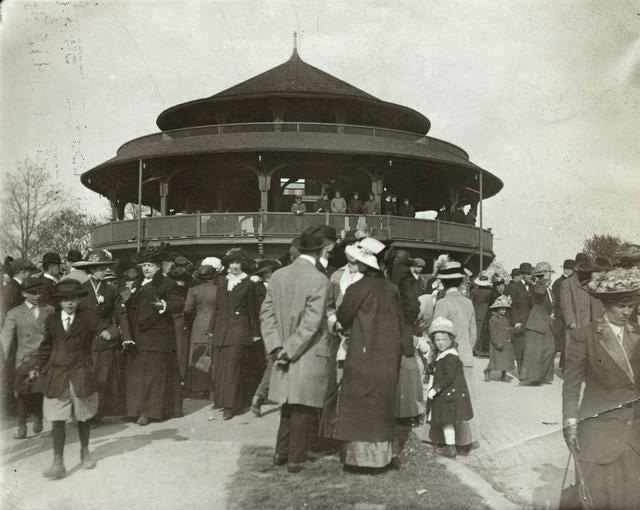
Olmsted placed the pavilion strategically at the Pinnacle, the park's highest point, adjacent to the city reservoir. Funding problems were about to stall construction when George Ellwanger and Patrick Barry donated the $7,000 as a gift to the children of Rochester. And here's a view in color from our vintage postcard collection ...
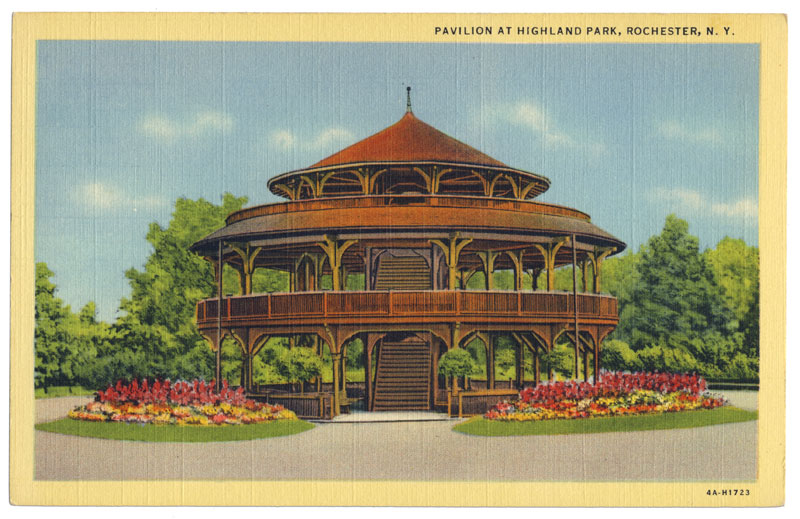
By the way, if you're looking for the pavilion this weekend (2010), don't bother. It was closed in 1961 due to lack of maintenance, and demolished in 1963. OKAY, onward, past the pavilion a little further up this hill and... ah yes... there's the pretty Highland Park Reservoir. This was a bit harder to demolish so they decided to leave it. And we're glad they did...
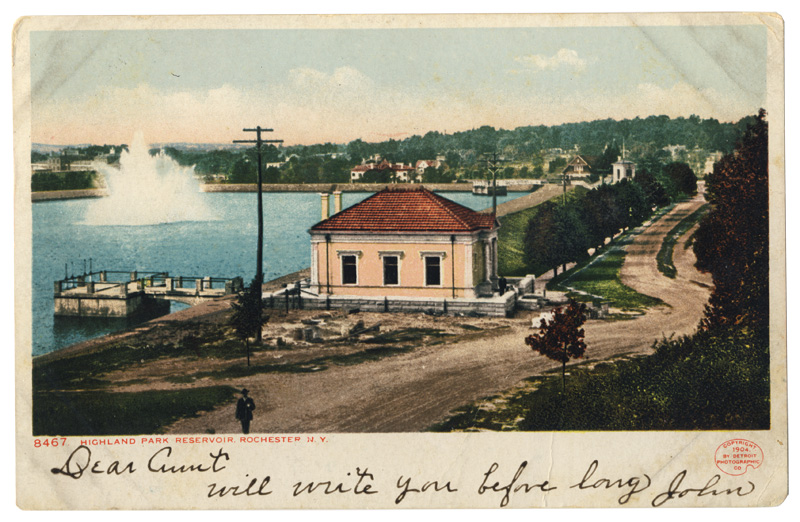
Oh boy oh boy... here comes the parade! How I love a good parade. This one is dedicated to the Lilac Queen and her court. The parade consists mostly of young women and girls wearing costumes and carrying lilacs. But who is this "Lilac Queen"? Good question. Let's meet her...
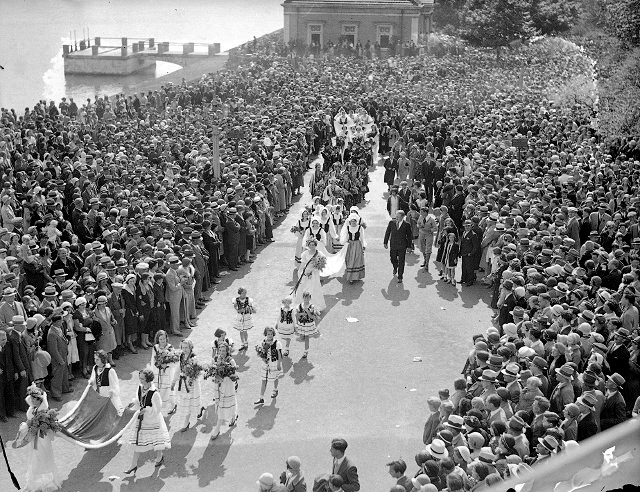
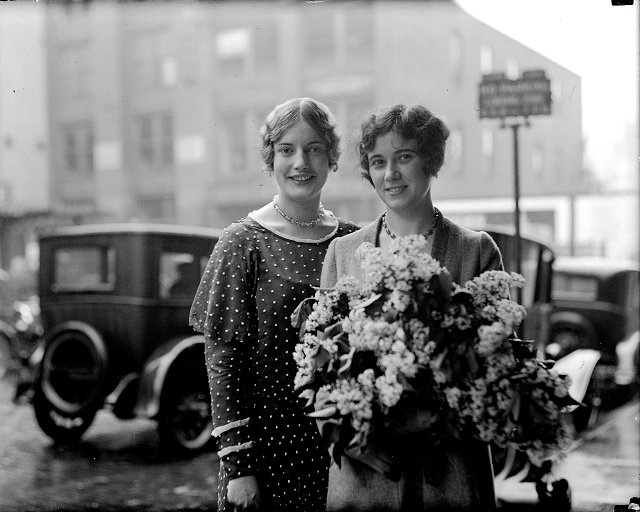
In 1930 the first Lilac Festival Queen Contest was held and Christine M. Blackwell, an instructor at the YWCA, was crowned and paraded around like the true queen she is. That's her on the right. The requirements to be Lilac Queen? Simple: personality, poise and charm. In 1932, 7 Lilac Queens were chosen representing national groups & the celebration was extended to Lilac Week. Unfortunately the Lilac Queen contest, lasted only 4 years because the mobs accompanying the pageantry threatened the park shrubs. Oh well. At least we've still got the flowers, err, I mean lilacs.
Alright now, get. Go take a break from this blog and go experience the 2010 Lilac Festival. Oh, and if you take any pictures at this year's event, leave a flickr link in the comments . We'd love to see your photos!


